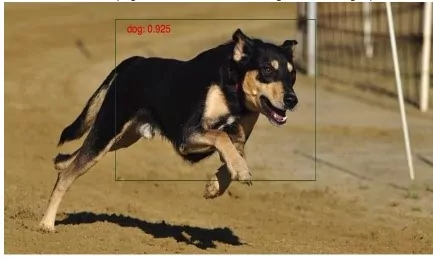IBM PowerAI Vision: A visual recognition AI solution
Many organizations are interested in employing deep learning and data science but have a skill and resource gap that impedes adoption of these technologies. To address this need, IBM created an easy deep learning solution specifically for business users.
Designed to lower the barrier of entry required to create AI applications, IBM PowerAI Vision — a visual recognition solution running on IBM Power Systems — delivers an intuitive tool set that empowers users to create visual models without coding or deep learning expertise. As a result, organizations that lack data scientists can create highly accurate deep learning models to classify images and detect objects in images or videos.
Have you heard about deep learning and image recognition?
Are you curious how it works?
In late 2018, I had the opportunity to deliver a special session on PowerAI Vision at the IBM Developer Day 2018 in Seoul, South Korea. AI is a popular topic, and the session was in high demand, so in this post, I want to outline the basics of PowerAI Vision for you and demonstrate some ways that it can be used.
What is PowerAI Vision?
IBM PowerAI Vision is an AI application that includes the most popular open source deep learning frameworks and is developed for easy and rapid deployment. It provides complete workflow support for computer vision deep learning that includes lifecycle management from installation and configuration, to data labeling, model training, inferencing and moving models into production. By combining PowerAI Vision with IBM Power Systems servers, organizations can rapidly deploy a fully optimized AI platform with great performance.
Types of image recognition in PowerAI Vision
PowerAI Vision can be used to make your own neural network model for varying types of image classification and detection:
Static image classification. Determine whether an image belongs to one or more classes based on overall image contents (for example, “Determine the species of dog in the image”).
Static image object detection. Determine and label the contents of an image based on user-defined data labels (for example, “Locate and label all dogs in the image”).
Video object detection. Determine and label the contents of an uploaded video based on user-defined data labels (for example, “Locate and label all dogs in the video”).
PowerAI Vision makes data uploading, manual labeling, auto-labeling, model training and testing easy for the user. Auto-labeling, in particular, is a good example of the definition of machine learning (”The field of study that gives computers the ability to learn without being explicitly programmed,” according to Arthur Samuel in 1959). If you auto-label a data set, an existing trained model is used to generate labels for images and video frames that have not been manually labeled, which can dramatically shrink the time required for the deep learning process. This is an area in which PowerAI stands apart from competing solutions.
Putting PowerAI Vision to work
There are many ways to use PowerAI Vision. Here are a few examples:
Drone surveillance for energy and utilities. Power companies rely on human labor to visually inspect their towers covering large geographic areas. These manual inspections are notorious for being expensive, risky and slow, especially when the towers are spread over mountainous or inaccessible terrain. As a solution, power companies can transform inspection jobs by deploying drones with cameras and adopting PowerAI Vision. In the energy and utilities industries, PowerAI Vision can help save time, increase inspection frequency and reduce risk to workers.
Ensuring the safety of workers. According to the International Labor Organization, some 2.3 million women and men around the world succumb to work-related accidents or diseases every year. Work accidents remain a huge, cross-industry problem, despite safety regulations and procedures. Visual recognition AI technologies can be used to monitor and enforce safety regulations. For example, PowerAI Vision can alert workers when entering hazardous environments or scan a construction area to alert supervisors when they need to act.
Visual insights for quality. Manufacturing operations use raw-visual confirmation to ensure that parts have zero defects. The volume of inspections and the variety of defects raise challenges to delivering high-quality products. PowerAI Vision can be used to deploy a deep learning model on factory floors to ensure little decision latency during production and deliver reliable results with low escape rates.
PowerAI Vision can be used for numerous other applications, such as city traffic management, market customer analysis and X-ray inspection in airports. Deep learning is still relatively young, so it will be exciting to see where else this technology will be applied in the future.
Ready to give it a try?
In my next blog post, I’ll explain the top benefits PowerAI Vision, so please stay tuned to learn more.
Meanwhile, if you’re looking for support on an IBM Power Systems deep learning project, don’t hesitate to contact IBM Systems Lab Services. Lab Services consultants have infrastructure expertise to help businesses rapidly deploy a fully optimized and supported cognitive infrastructure platform for AI and machine learning.
The post IBM PowerAI Vision: A visual recognition AI solution appeared first on IBM IT Infrastructure Blog.


